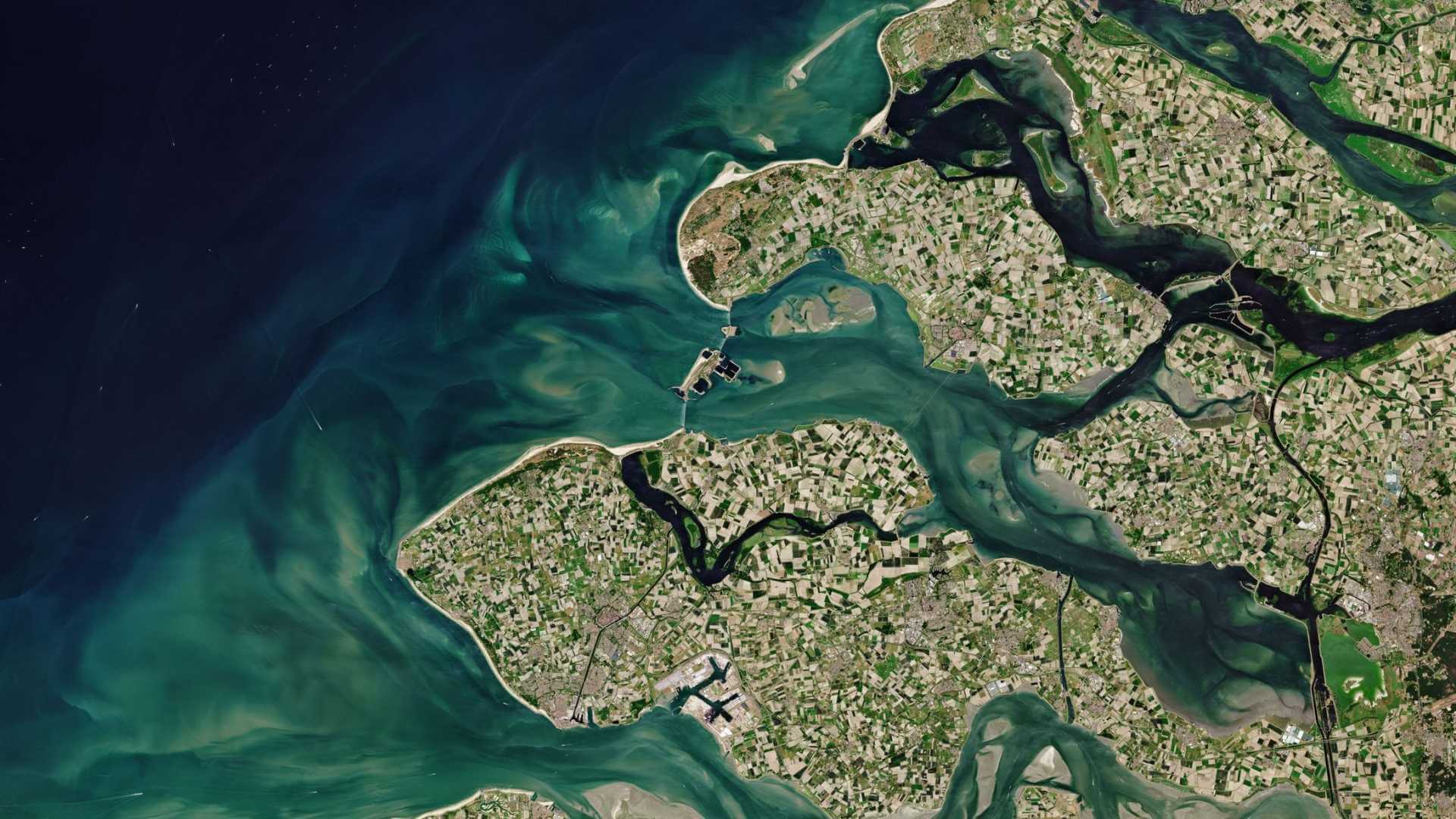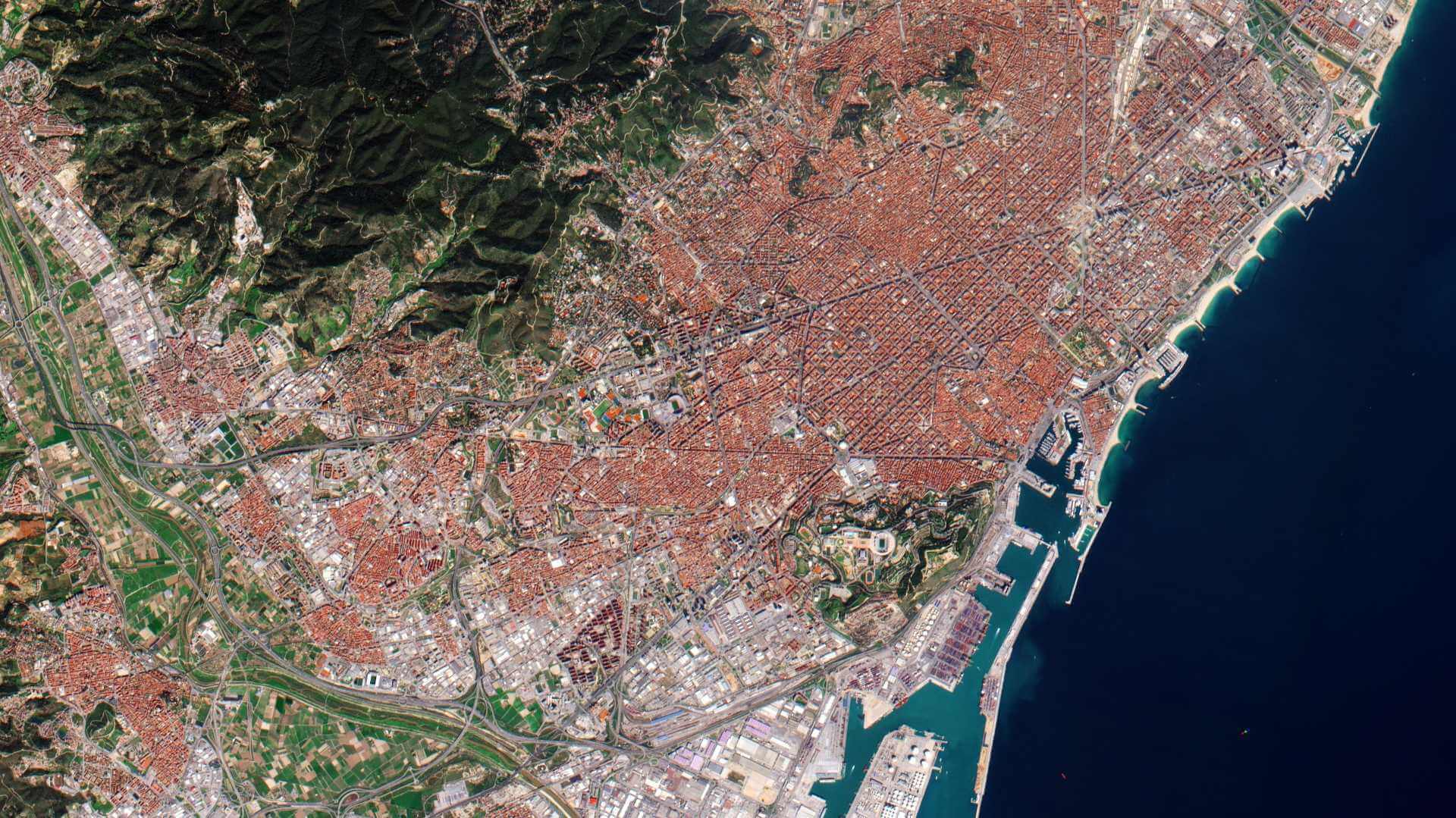Featured
About Seasat
Seasat was a NASA oceanography experimental mission. It was launched on 28 June 1978 and ceased operations that same year. On board was the first-ever spaceborne synthetic aperture radar (SAR) system for science applications.
| Orbit Altitude | 800 km |
| Orbit Type | Non-sun-synchronous, near-circular polar |
| Repeat Cycle | 17 days (sub-cycle of 3 days) |
Seasat Objectives
Seasat had three main objectives:
- To demonstrate techniques to monitor Earth's oceanographic phenomena and features from space on a global scale.
- To provide timely oceanographic data to scientists studying marine phenomena, and to users of the oceans as a resource (ocean shippers, fishermen, marine geologists and others.
- To determine the key features of an operational full-time ocean-monitoring system
Seasat Instruments
Synthetic Aperture Radar (SAR)
Seasat's SAR instrument provided spectacular images of Earth's land surfaces, thus demonstrating the immense potential of the SAR observation technology and generating great interest in satellite active microwave remote sensing.
Other instruments
Seasat carried five other instruments designed to return the maximum information from ocean surfaces:
SMMR (Scanning Multichannel Microwave Radiometer):
The SMMR was a five-frequency instrument of Nimbus-7 mission heritage. The instrument had the objectives of monitoring sea surface temperatures, wind speeds, rain rate, atmospheric water content (mapping of columnar water vapor distribution over the global oceans) and ice conditions.
ALT (Radar Altimeter):
The ALT instrument was a Ku-band compressed pulse radar altimeter of S-193 heritage flown on Skylab and of ALT flown in the GEOS-3 mission. The instrument had the objectives of the determination of sea surface profiles, currents, wind speeds and wave heights. It was the first attempt to achieve 10 cm altitude precision from orbit.
SASS (Seasat-A Scatterometer System):
SASS (of S-193 heritage on Skylab) is a fan-beam dual-polarised Doppler scatterometer with the objective of radar backscatter measurements (sigma naught) over ocean surfaces for estimation of the wind field. The experimental SASS instrument first demonstrated the ability to accurately infer vector winds over the ocean's surface from a spaceborne platform
VIRR (Visible and Infrared Radiometer):
VIRR is a supporting instrument on Seasat (of SR heritage on NOAA-1) with the objective to provide images of visual reflection and thermal infrared emission from oceanic, coastal, and atmospheric features that might aid in interpreting the data from the other Seasat sensors (also some quantitative measurements of SST and cloud top height).
LRR (Laser Retro-Reflector):
A device to support precision orbit determination for Seasat.
| Parameter | Value |
| Radar Center Frequency | 1.275 GHz (L-band) |
| System Bandwidth | 19 MHz (linear FM) |
| Pulse Duration | 33.4 µs |
| Antenna Dimensions | 10.74 m x 2.16 m |
| Ground Incidence Angle | 23º±3º cross track |
| No of Looks | 4 |
| Swath Width | 100 km |
| Radar Wavelength | 23.5 cm |
| PRF | 1464-1640 Hz |
| Polarization | Horizontal transmit, horizontal receive (HH) |
| Antenna Look Angle | 20º from vertical (fixed) |
| Antenna Type | 1024-element passive microstrip based arrays antenna, linearly polarized |
| Pixel Size | 25 m x 25 m |
| Transmitted Peak Power | 1 kW |
Seasat Data
DATA COLLECTIONS
ESA offers to registered user the access through the Online Dissemination server to the following data collections:

